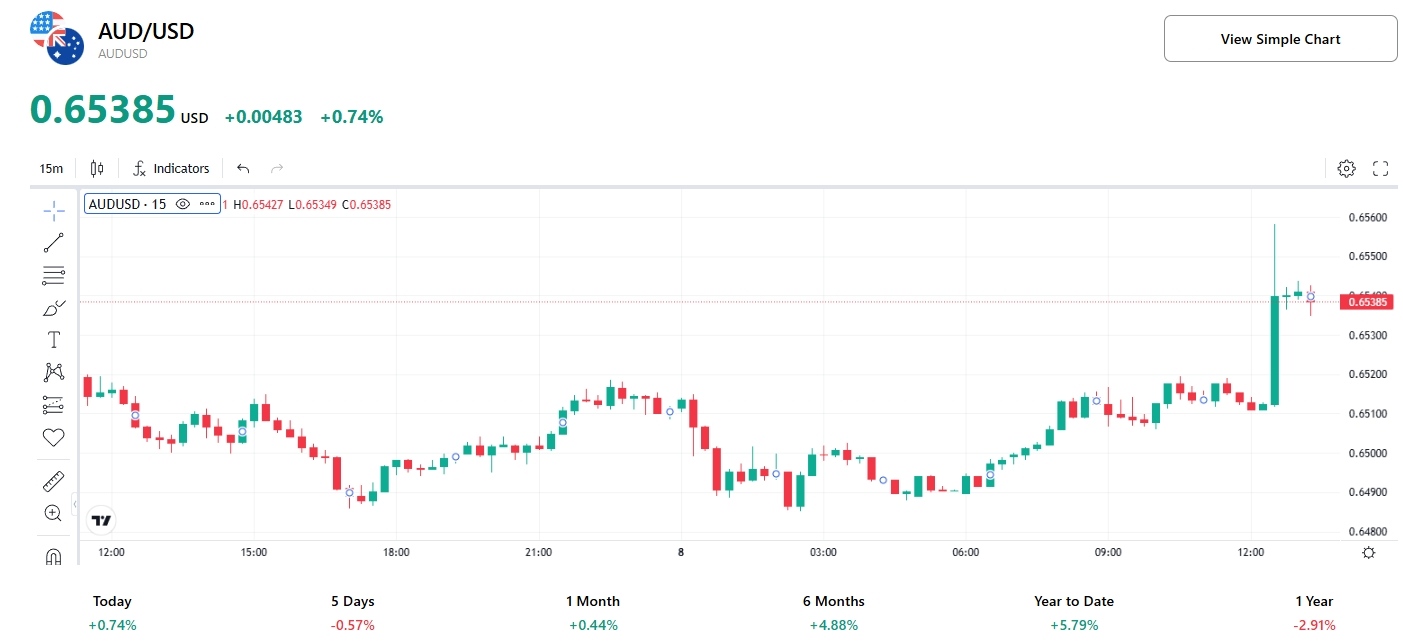Rate Hold Surprises Markets: RBA’s Inflation Reasoning Puzzling, Australian Dollar Rises 1%
TradingKey - In a surprise move that defied market expectations of a rate cut, the Reserve Bank of Australia (RBA) left its policy rate unchanged amid concerns over inflation sustainability — potentially influenced by U.S. tariff policies. The decision sent the Australian dollar (AUD/USD) surging nearly 1%.
On Tuesday, July 8, the RBA announced it would keep the cash rate at 3.85%, well above the 3.60% expected by most economists. The central bank had previously cut rates by 25 basis points in both February and May, leading many to believe another reduction was likely at this meeting. Among the 32 economists surveyed by Bloomberg, only five predicted no change.

RBA Policy Rate, Source: TradingKey
Following the announcement, the Australian dollar jumped approximately 1% against the U.S. dollar, with AUD/USD rising 0.74% on the day to 0.65385 — marking the largest single-day gain since early June. Meanwhile, the S&P/ASX 200 index edged down 0.19% to 8,573.40.

AUD/USD Exchange Rate, Source: TradingKey
In its post-meeting statement, the RBA said policymakers were waiting for more data to confirm that inflation would return sustainably to its target of 2.5%. While recent monthly CPI figures suggest second-quarter inflation is broadly in line with expectations, it came in slightly higher than anticipated.
The central bank emphasized that monetary policy remains capable of responding decisively should global developments significantly impact Australia's economic activity and inflation.
Why Was a Rate Cut Expected?
Australia’s May inflation rate stood at 2.1%, below the forecast of 2.3% and April’s 2.4% — the lowest level since October 2024. First-quarter inflation was also at 2.4%, the lowest in four years. This downward trend had fueled market optimism about a third-rate cut in 2025.
From an international perspective, some analysts argued that given geopolitical tensions and the potential economic fallout from tariffs, there was little downside risk to cutting rates.
Domestically, inflation is nearing the lower end of the RBA’s 2–3% target range, household spending remains weak, and consumer sentiment surveys show prevailing pessimism — all pointing toward a case for easing monetary policy.
Australia’s Q1 GDP grew by 1.3% year-over-year, below the expected 1.5%, and rose just 0.2% quarter-on-quarter, far below the projected 0.4%. Capital Economics noted that such soft growth could strengthen the RBA’s rationale for further policy easing, as rising economic uncertainty may push households to prioritize saving over spending.
Australian Treasurer Jim Chalmers expressed openness to further rate cuts. Following the RBA’s decision, he posted on X that the outcome was not what millions of Australians had hoped for, nor what the markets or economists expected. He added that real and sustained progress has been made in bringing down inflation.
Investors are now closely watching the upcoming release of July’s CPI data to gauge whether the RBA will resume its easing cycle.
The RBA also acknowledged that global economic uncertainty remains high, and households and businesses may delay spending until the outlook becomes clearer.



